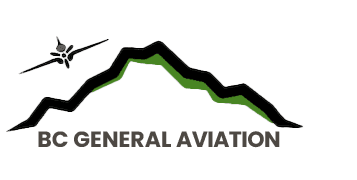Updated December 30, 2019
Introduction
ADS-B Questions & Answers (Applies to U.S. Airspace)
Am I exempt from the ADS-B requirements?
– There are no special exemptions for aircraft registered outside the United States.
– The only exception is that aircraft that are transiting Class C US Airspace that is controlled by a NavCanada (The Cherry Point/East Point Cooridoor as an example) will not need to be ADS-B equipped.
What areas will require that I have ADS-B Out installed in my aircraft?
– The simple answer is that any airspace that currently requires you to have a Mode-C transponder will require you to have ADS-B as of 2020. There are a few additions to this rule which include any airspace that lies over or under Class B (30nm Ring), over Class C and all airspace above 10,000 MSL (greater than 2500AGL).
– Class B airspace is located above most of the nation’s largest airports such as: Los Angeles, San Francisco, New York, Seattle, Chicago, Phoenix, Miami etc… It is more commonly described as an upside down wedding cake that extends out to 30nm from the main airport. Under the new ADS-B mandate for 2020 you will need to be ADS-B equipped if you wish to fly within the 30nm circle surrounding any Class B regardless of your altitude. (See Seattle Example Below)
Can I stay above Class C?
– No you will have to fly around Class C airspace as well
Are there any restrictions outside controlled airspace?
– Yes, without ADS-B you are restricted to operating below 10,000 MSL. In order to allow for flight in mountainous regions there is an exemption zone 2500AGL above 10,000 MSL to allow you to clear the mountains.
How do the new ADS-B rules affect me as a pilot in British Columbia come 2020?
When you fly in the US:
- Do you fly at or above 10,000 feet MSL (or more than 2,500 feet AGL above 10,000 feet MSL)?
- Do you fly to or from, above or through Class C airspace?
- Do you fly within 30 nautical miles around Class B airport?
If you can answer no to all these questions or arrange you flight so that you can answer no to these questions then you do not need to worry about ADS-B.
How much of the Northwestern States will be off limits without ADS-B?
Conclusion
ADS-B out gives ATC the ability to track your aircraft with greater reliability and accuracy than conventional radar. If pilots opt to pair their ADS-B out installation with an ADS-B in component such as the Appreo Stratus they will be treated to live weather and some traffic information. One important thing to remember is that currently there are no ADS-B antenna’s in Canada so the benefits of ADS-B in are really only limited to when you are flying in the U.S. and within range of the numerous ground based ADS-B stations.
For more information visit the FAA ADS-B FAQ PAGE






